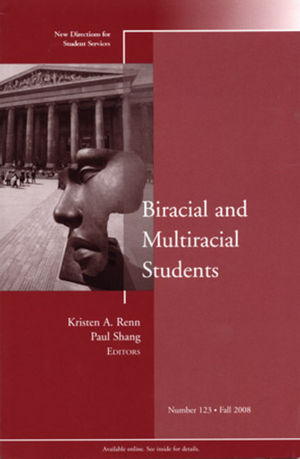Race Policy and Multiracial AmericansPosted in Anthologies, Books, Campus Life, Family/Parenting, Health/Medicine/Genetics, History, Latino Studies, Law, Media Archive, Politics/Public Policy, Social Science, United States on 2016-01-27 14:41Z by Steven |
Race Policy and Multiracial Americans
Policy Press (Available in North America from University of Chicago Press)
2016-01-13
226 pages
234 x 156 mm
Hardback ISBN: 9781447316459
Paperback ISBN: 9781447316503
Edited by:
Kathleen Odell Korgen, Professor of Sociology
William Paterson University, Wayne, New Jersey
Race Policy and Multiracial Americans is the first book to look at the impact of multiracial people on race policies—where they lag behind the growing numbers of multiracial people in the U.S. and how they can be used to promote racial justice for multiracial Americans. Using a critical mixed race perspective, it covers such questions as: Which policies aimed at combating racial discrimination should cover multiracial Americans? Should all (or some) multiracial Americans benefit from affirmative action programmes? How can we better understand the education and health needs of multiracial Americans? This much-needed book is essential reading for sociology, political science and public policy students, policy makers, and anyone interested in race relations and social justice.
Contents
- Introduction ~ Kathleen Odell Korgen
- Multiracial Americans throughout the History of the U.S. ~ Tyrone Nagai
- National and Local Structures of Inequality: Multiracial Groups’ Profiles Across the United States ~ Mary E. Campbell and Jessica M. Barron
- Latinos and Multiracial America ~ Raúl Quiñones Rosado
- The Connections among Racial Identity, Social Class, and Public Policy? ~ Nikki Khanna
- Multiracial Americans and Racial Discrimination ~ Tina Fernandes Botts
- “Should All (or Some) Multiracial Americans Benefit from Affirmative Action Programs?”~ Daniel N. Lipson
- Multiracial Students and Educational Policy ~ Rhina Fernandes Williams and E. Namisi Chilungu
- Multiracial Americans in College ~ Marc P. Johnston and Kristen A. Renn
- Multiracial Americans, Health Patterns, and Health Policy: Assessment and Recommendations for Ways Forward ~ Jenifer L. Bratter and Chirsta Mason
- Racial Identity Among Multiracial Prisoners in the Color-Blind Era ~ Gennifer Furst and Kathleen Odell Korgen
- “Multiraciality and the Racial Order: The Good, the Bad, and the Ugly”~ Hephzibah V. Strmic-Pawl and David L. Brunsma
- Multiracial Identity and Monoracial Conflict: Toward a New Social Justice framework ~ Andrew Jolivette
- Conclusion: Policies for a Racially Just Society ~ Kathleen Odell Korgen



